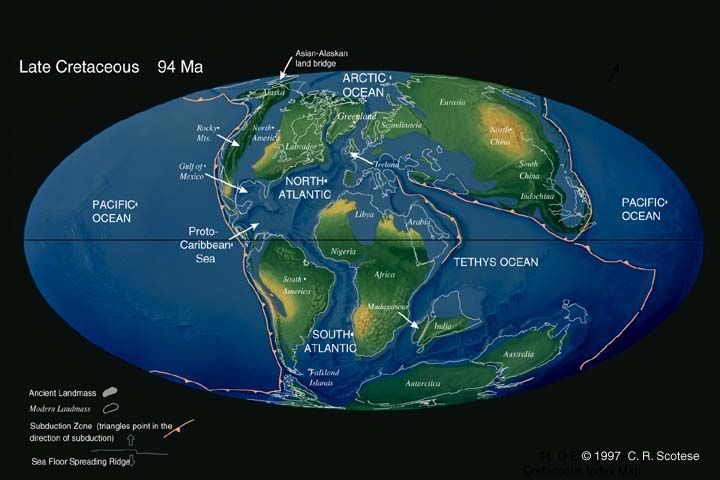The Great Dying. The end Permian extinction was the largest known extinction event in Earth's history: 90% of marine fauna and 70% of terrestrial organisms did not make it into the Mesozoic. However, this extinction directly precedes the rise of the dinosaurs. It is thought that volcanism at the Siberian Traps played a key role in this event. However, new research puts into perspective exactly how devastating the aftermath of the extinction was for life on earth, as well as showing how adaptable the first dinosaurs were, evolving from the ashes of a catastrophic event.
Two papers caught my attention regarding the subject, both siting climate as the reason it took life several millions of years to recover. The first, in my opinion, is absolutely mind blowing in regards to early Triassic climate. After a mass extinction, the fossil record always hints at a "dead zone", where species are not seen for thousands of years. After the P/T extinction, species were not seen for 5 million.

Lead author on this project, Yadong Sun, puts this down to extreme temperature, especially around the tropics: ocean surface temperatures of 40 degrees, and amazingly, air temperatures of up to SIXTY degrees. "Global warming has long been linked to the end-Permian mass extinction, but this study is the first to show extreme temperatures kept life from re-starting in Equatorial latitudes for millions of years", says Sun. Photosynthesis stops, and terrestrial animals cannot maintain the high metabolic costs of keeping cool. The lack of photosynthesising plants, which had trouble recovering from the extinction, meant a breakdown in global carbon recycling, thus causing an unchecked increase in greenhouse gases, and hence temperature. This data was collected by examining oxygen isotopes in conodont teeth, which are temperature controlled.
An article posted only a few days later seemed to enhance Sun and his team's findings. Sedlacek and Saltzman, of Ohio State University, examined the chemical composition of sedimentary rocks laid down at the extinction event. They found that as a result of volcanism at the time of the great dying, large amounts of the Earth's surface was being weathered by greenhouse gases, as well as deposition of vast stretches of lava, chemically altering the Earth's climate. The air was full of carbon dioxide, and oceans chocked with sediment. "It was a game-changer, biologically. Fish would have had silt in their gills, coral reefs would have been buried -- as far as we can tell, the things that truly thrived in the ocean during that time were microbes," according to Sedlacek.
 |
| Nyasasaurus |
These findings come with the exciting, paleobiologically speaking, discovery of the oldest known dinosaur, Nyasasaurus, pushing back the date of the first dinosaurians by over 10 million years, into the middle Triassic. How the archosaurs, the group dinosaurs radiated from, not only survived the P/T extinction, and then endured the recovery hell that made life almost impossible, must go down as one of the greatest feats in nature.
Yadong Sun, Michael M. Joachimski, Paul B. Wignall, Chunbo Yan, Yanlong Chen, Haishui Jiang, Lina Wang, and Xulong Lai. Lethally Hot Temperatures During the Early Triassic Greenhouse. Science, 2012; 338 (6105): 366-370
http://www.sciencedaily.com/releases/2012/10/121018141844.htm
http://www.sciencedaily.com/releases/2012/11/121105081238.htm
http://i.livescience.com/images/i/000/034/065/iFF/nyasasaurus-121204.jpg?1354662975




























